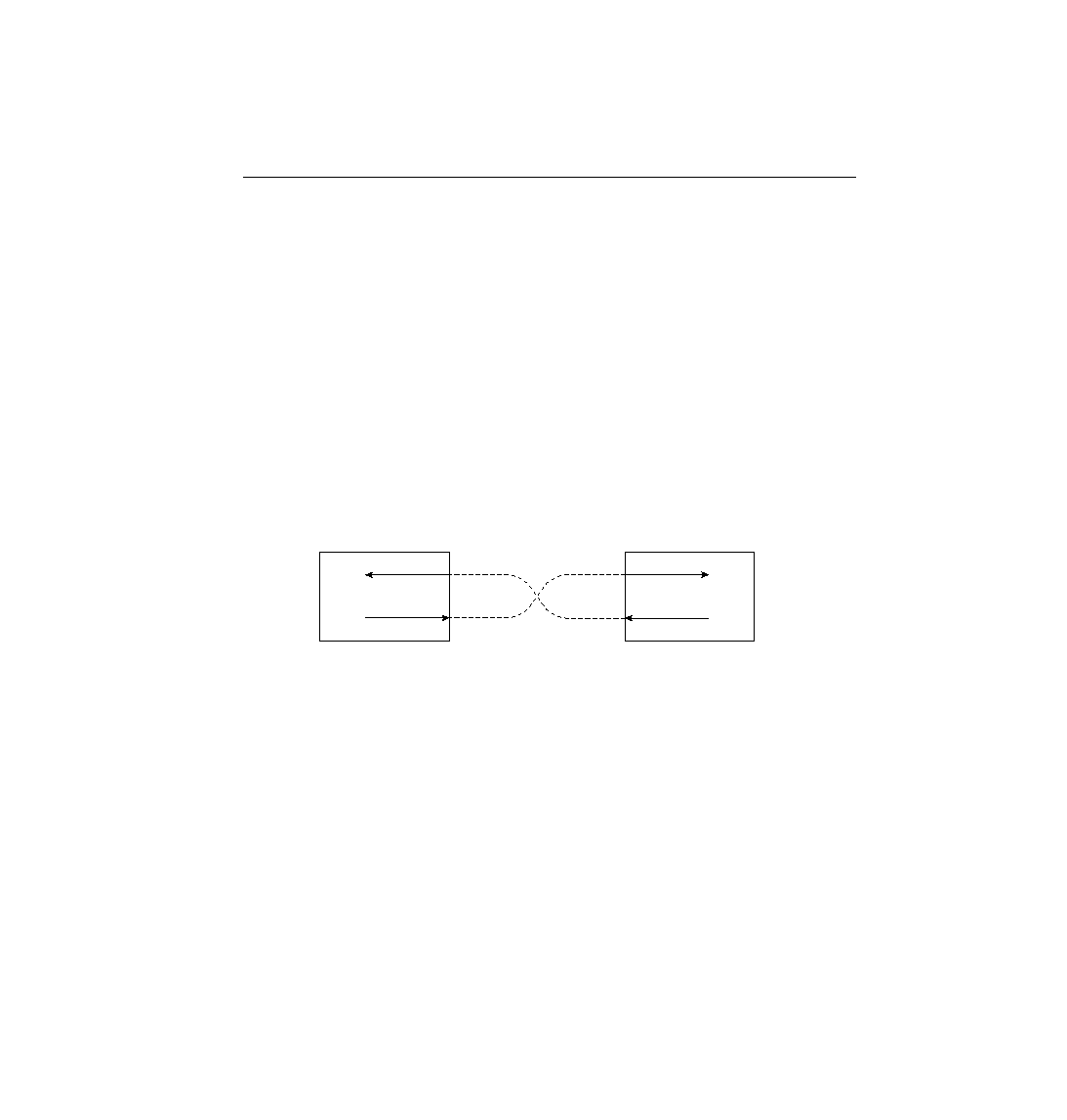
devices. In other words, the hub sends so that the attached stations
receive on their receive pair. (Similarly, the hub listens on the
transmit pair because that is the pair used by the station for
transmissions.)
Ethernet hub, as shown in Figure 4-2. The hub has created the electrical equivalent of a bus,
so CSMA/CD rules are still in effect. Essentially, if the topology allows collisions, then
CSMA/CD is used to react to the collisions. Because CSMA/CD rules are used when collisions
could occur and half-duplex operation is required for CSMA/CD, full-duplex operation is not
possible with a shared 10BaseT hub. With a shared 10BaseT hub, if a station is receiving a
frame, it would not choose to also start sending another frame because that would cause a
collision.
of Ethernet between a pair of NICs, instead of cabling the NIC to a hub. Figure 4-3 shows the
full-duplex circuitry.
send and receive simultaneously. This reduces Ethernet congestion and provides the following
advantages, as compared to half-duplex 10BaseT operation:
shown in Figure 4-3, then the full duplex would not be very useful. However, full duplex is also
an option when using switches. When a single device is connected to the switch port, the switch
can ensure that there is no collision, which allows full duplex to work. If a shared hub is
connected to a switch port rather than a single device, then full duplex is not allowed because
collisions could still occur.